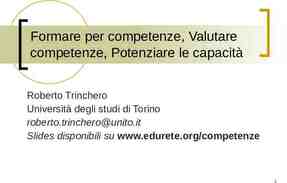Disability Inclusion and Appreciation
13 Slides132.98 KB
Disability Inclusion and Appreciation
What do You Know About Disability?
What Does Society Believe About Disability?
Depiction of Disability in the Media 1. 2. Pitiable and pathetic: Tiny Tim in A Christmas Carol. Object of violence: Audrey Hepburn’s character, who is terrorized as an individual who is blind in the movie Wait Until Dark. 3. Sinister or evil: Captain Ahab, who has one prosthetic leg in Moby Dick. 4. Atmosphere: Individuals who are background characters, such as blind musicians. 5. Super Crip: The private detective who used a wheelchair in the television show Ironsides. 6. Laughable: Mr. Magoo, who had a visual impairment. 7. His or her own worst—and only—enemy: Those who are portrayed as whiners who could succeed if they tried harder. 8. Burden: Those who appear to others as ―helpless‖ and being in need of care. 9. Nonsexual: Those who appear ―as totally incapable of sexual activity. 10. Incapable of fully participating in everyday life: Those who are presented as unable to be included in activities as employees, brothers or sisters, students, etc.
Feature Film Representation Of 1,051 films studied, 120 (slightly more than 11 percent) included people with disabilities, with psychiatric disorders being represented most frequently. The authors also found a much larger number of films with negative portrayals of people with disabilities (98) than positive portrayals (22).
What Can I Do to Combat Negative Influences? Be aware Challenge what you think, see and hear Be proactive Be a champion
Successful Inclusion in Your Program Community Outreach Program Design Access to the Program Site and Related Program Essentials
Reasonable Accommodation: Ensuring Equal Opportunity The Application Process The Essential Functions of the Position Enjoy Equal Benefits of the Service Experience
Disability Community Development Plans Goal 1: AmeriCorps programs will increase the number of partnerships with disability organizations resulting in increased capacity to include persons with disabilities in AmeriCorps. Goal 2: Persons with disabilities will complete a service experience with an AmeriCorps program.
Outputs for Goal 1 First – Third Year Outputs: Three partnerships Fourth Year – Ongoing Outputs: Five partnerships Clarification: In the AmeriCorps grantees first program year, three (3) partnerships will be established with the following statewide agencies: Florida Division of Vocational Rehabilitation, Florida Division of Blind Services and the Agency for Persons with Disabilities. In year four of the AmeriCorps grantees contract cycle, AmeriCorps Grantees will established two (2) additional partnerships with disability organizations. Ideally, one (1) required partnership to be a recognized exceptional education counterpart of the Florida Bureau of Exceptional Education and Student Services and one (1) of the AmeriCorps programs choosing.
Outcomes for Goal 2 Outcomes: As a result of the creation of partnerships with disability organizations a minimum of five (5) individuals with varying disabilities will complete an individual service experience with the AmeriCorps program each year.
Individual Service Experiences Partnerships established between AmeriCorps grantees and disability organizations need to result in persons with disabilities provided one or more of the following “hands on” activities: 1. Shadowing 2. Volunteering 3. Internships
Questions?


















